Redshift Shock Stop Seatpost: Checkpoint – by MG
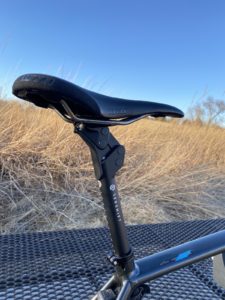
Suspension seatposts are a concept most riders can get behind in theory, but in reality, many riders are skeptical on their usefulness. After the runaway success of its Shock Stop suspension stem, Redshift Sports set out to change riders’ perceptions of what a suspension post could be.
The result is the new Shock Stop seatpost, which Guitar Ted, Grannygear and I have been testing on our respective bikes since late-December. Today, I’ll give you an update on our testing, but if you haven’t already, check out Guitar Ted’s “Getting Rolling” post for specifications, weight and pricing.
As Guitar Ted noted in his introductory post, our positive experience with the Shock Stop stem gave us high expectations for the performance of the Shock Stop seatpost. Fortunately, Redshift Sports didn’t disappoint. They took the time they needed to refine the design considerably from the prototypes they first showed at Sea Otter 2018.
The production Shock Stop seatpost has a traditional two-bolt seat head instead of the one-bolt head on the prototype. On one hand, the two-bolt seat head makes saddle installation a bit more complicated than with the one-bolt seat head. On the other hand, the two-bolt version is undoubtedly more robust, and it’s also easier to make small saddle angle adjustments with.
As Guitar Ted noted, the angle of the seat head bolts makes adjustment a bit more challenging. I found that using a T-handle hex wrench on the front bolt and an L-bend hex wrench on the rear bolt made adjustments easier. Depending on the multitool you carry, on the road adjustments may or may not be possible. Check your tool before your ride, or simply carry a full-size 4mm L-bend wrench on rides until your position is dialed.
On the Road
In short, the Shock Stop seatpost is impressive. It virtually erases small- and mid-sized bumps and doesn’t bob excessively on smoother surfaces. The stock spring is stiff enough to not bottom noticeably under my 170 pound weight. Adding the secondary spring makes the post work equally well for riders in the 200+ pound range.
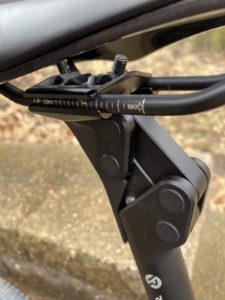
The travel path of the Shock Stop post is different than the Kinekt post from Cirrus Cycles. Where the Kinekt post is designed to travel in a more vertical plane, the Shock Stop travels back and down as it compresses. The travel is more vertical than a Cane Creek Thudbuster, but moves back horizontally more than the Kinekt post, particularly in the early travel.
While at first I was skeptical, over time I’ve come to realize I prefer the Shock Stop’s travel path, and the way it works over bumps. It really erases bumps and vibration, and is progressive enough later in the travel to prevent hard bottoming. In my opinion, that’s an improvement compared to the more linear spring rate of the Kinekt post.
I also like the way the saddle moves forward slightly under hard pedaling efforts with the Shock Stop post. Since the post is at 15-20% sag when you’re seated, the saddle moves up and forward as you pedal harder. I found this to be perfect for attacking climbs, and it’s come to be one of my favorite aspects of riding the Shock Stop post.
Throughout more than three months on the Shock Stop post, the pivots are completely smooth and free of play. We’ll let you know if that changes, but to-date our test posts have been completely trouble-free. They simply work, and that’s a beautiful thing.
What’s not to love?
While I didn’t have a problem with the weight of the Shock Stop post, not everyone will be thrilled basically doubling their seatpost weight compared to a quality rigid model. That said, I haven’t ridden a rigid post that delivers anywhere near the quantity or quality of shock absorption the Shock Stop post offers.
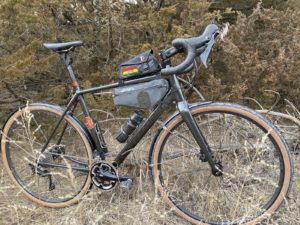
The only suspension post that’s significantly lighter is the Cane Creek eeSilk, and it comes with some trade-offs for the lighter weight. The Cane Creek post has shorter travel and an elastomer spring, which stiffens considerably in colder weather. I also found that I prefer the travel path of the Redshift post, when compared back to back.
Also, while I have no trouble going back and forth from the Shock Stop post to my other bikes with rigid posts, I know of some folks who don’t make the transition as easily. For riders with one primary bike, it’s not as much of a potential issue as it is for those with multiple bikes in their quiver, but it’s worth mentioning nonetheless.
For my riding style, I’d love to be able to slide the saddle forward just a couple millimeters more than I can with the current seat head. For most riders, this won’t be an issue, but I prefer a more forward saddle position. Saddle choice can help here, but ideally the seat head would allow for more forward adjustment.
The Verdict… for now
The Shock Stop seatpost is going to be a game changer for a lot of riders. It will definitely be my seatpost choice on long rides, as it absolutely eats up the cumulative bumps that cause pain in my back, shoulders and neck. I tried the Shock Stop post on four different bikes and it improved the ride quality of each significantly. That’s impressive.
Learn more about the Shock Stop post on the Redshift Sports website.
Note: Redshift Sports sent out the Shock Stop seatposts to RidingGravel.com at no charge for test and review. We are not being bribed, nor paid for this review and will give our honest thoughts and opinions throughout.


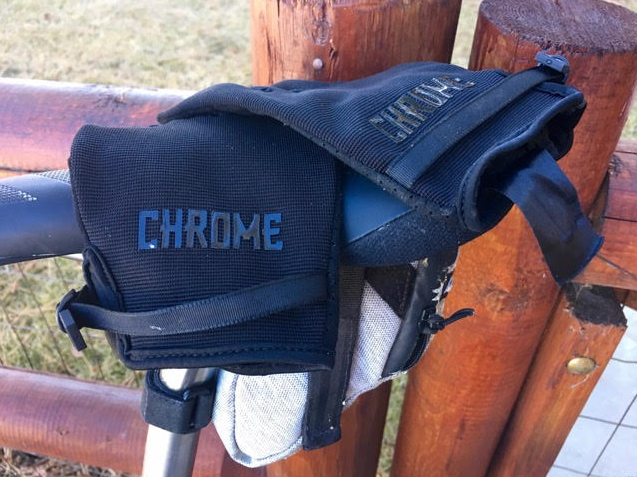

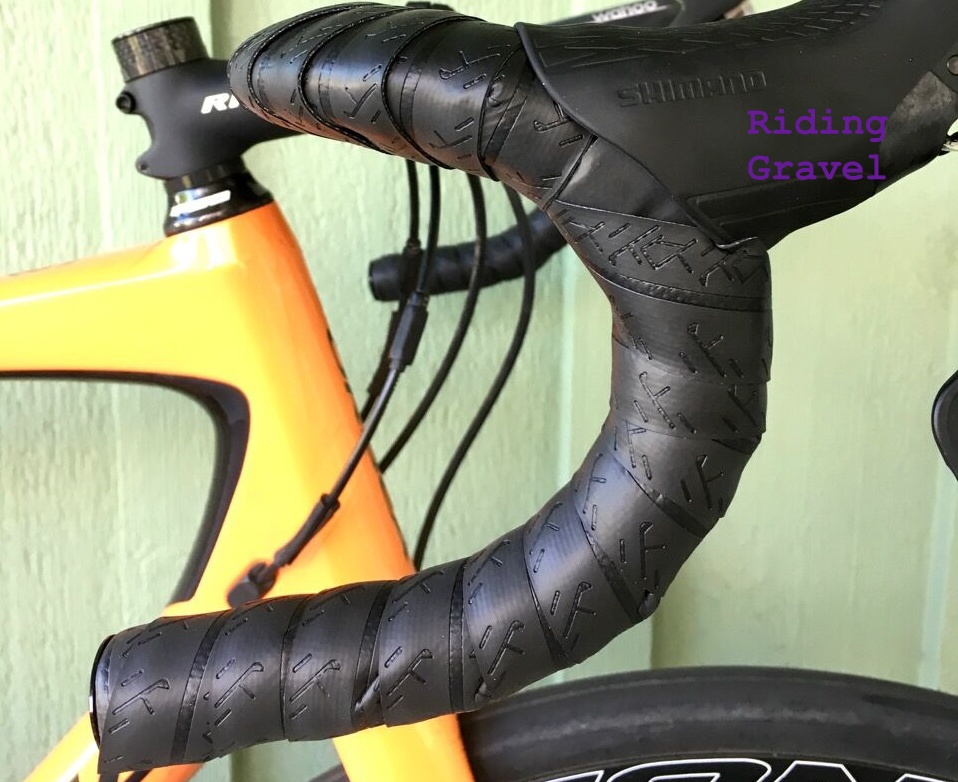
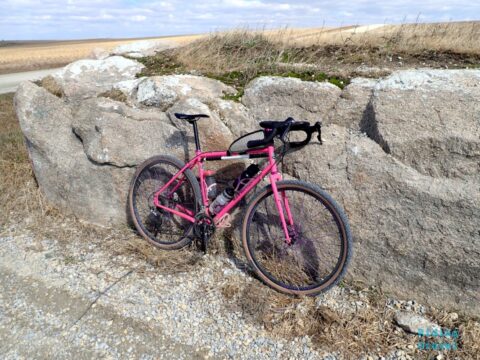
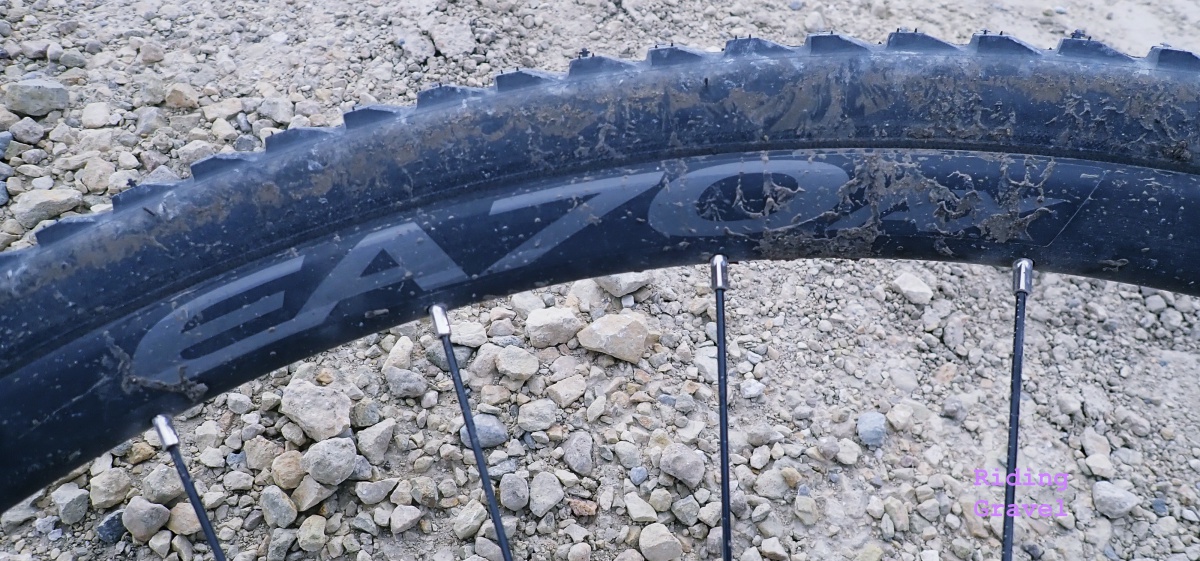

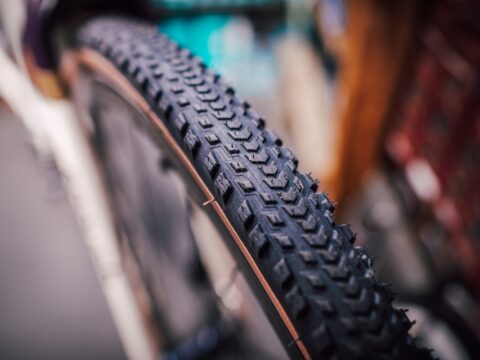
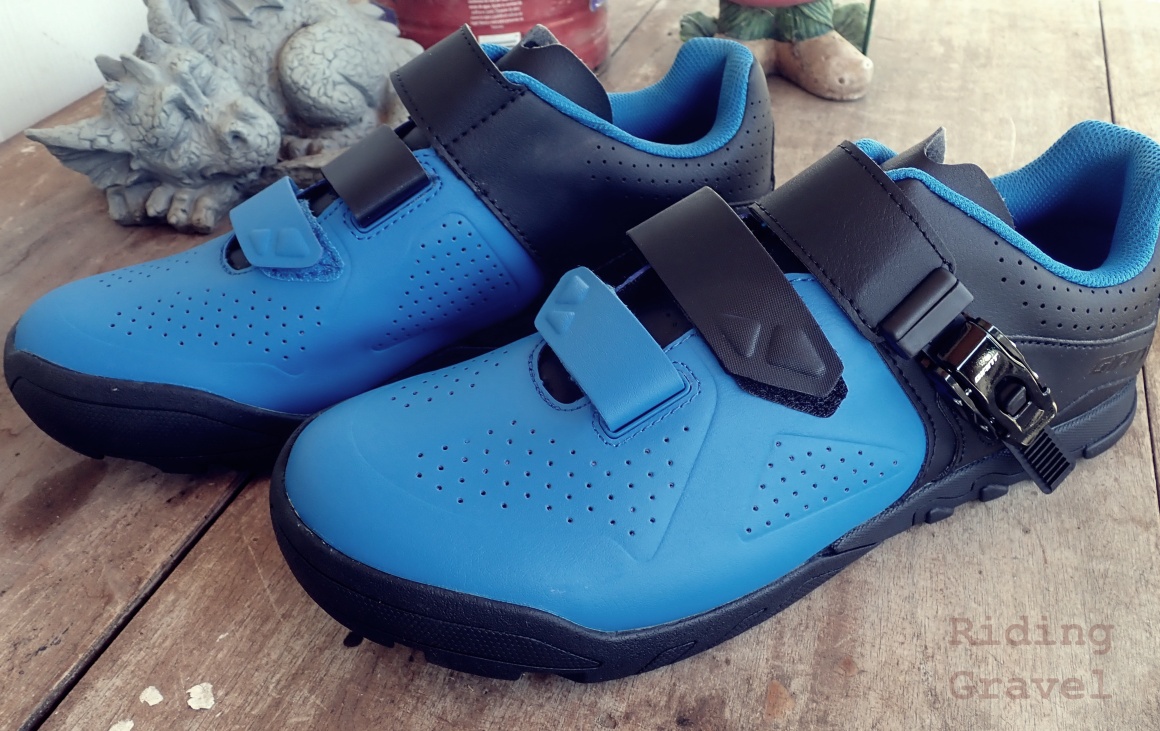

Thanks for this review!
I have a proprietary Giant seatpost on my gravel bike 🙁
Would you recommend it for a roadbike (riding lots of hills from 5-15% on decent and broken tarmac) nonetheless?
Thanks!
@Jos – Would I recommend “it”? Depends upon what “it” is. The Redshift post? I don’t think it is possible to retrofit it to a bike with a D-fuse seat tube, unfortunately. If you mean would I recommend that you ride what you have? Of course.
OK perhaps that wasn’t too clear. Here’s what I meant:
I have a proprietary Giant seatpost on my gravel bike, so unfortunately the Redshift post won’t work there 🙁
However, would you recommend the Redshift post to be used on a roadbike? I ride lots of hills from 5-15% on decent and on broken tarmac.
Thanks!
Hey @Jos – I think it’d work well on the road. It’s impressive how much it works, even over small bumps.
I have one. It’s the best suspension seatpost I’ve used to date (I’ve no experience with the Kinekt, but have had Cane Creek Thudbuster LTs on 3 or 4 of My bikes, 2 Thudbuster STs (still have one); a by.Schultz LT 2.0; ridden a SunTour on girlfriend’s bike and cheap rubbish PostModern as a novice rider over 20 years ago). Below are My observations:
– While on paper, the Thudbuster ST and the Redshift Shockstop have very comparable travel, there’s absolutely NO contest between the two. I can’t tell the Thudbuster ST from a rigid seatpost, save for its weight. The Shockstop, upon the other hand, feels very comfy. Better than anything else I’ve tried to date.
– The Thudbuster LT is much, much more efficient / comfortable (but also heavier) than the ST. Again, no contest there. Yet, despite its considerably greater travel, it’s not nearly as pleasant / effective as the Shockstop. The Shockstop comfort is impressive compared to anything else I’ve owned or tried so far. Almost as comfortable as a quality full-suspension frame when seated, but without the latter’s shortcomings (i.e., excessive bob, weight, preclusion of mudguard and rack use). Also, the Shockstop is lighter than the Thudbuster LT.
– By.Schultz: I would compare its comfort, roughly, with the Thudbuster LT’s. Meaning, it’s still inferior to the Shockstop. And heavier than even a Thudbuster LT, let alone a Shockstop.
– SunTour: it’s quite affordable. It’s heavy. But, remarkably enough, it is quite comfortable. Not as much as the Shockstop, but somewhat close (slightly better then the Thudbuster LT and the by.Schultz LT, but still not quite as comfortable as the Shockstop). The best value seatpost, but too heavy (and too cheap?) for a beautiful, light carbon road or gravel bike.
– Is the Shockstop perfect? Is anything? The weaknesses of the Shockstop are as follow:
– Expensive (as is the Kinekt)!
– The stated load limit of 110kg is disconcerting for Me as a heavy rider when out of shape. Thudbusters are rated to 150kg rider weight; the by.Schultz – 160kg (if I’m not mistaken). 110kg is vexatiously limiting.
The Shockstop has sandblasted finish, but, unlike cheaper sandblast-treated products, it doesn’t feel cheap or crude. It is still aluminium (as opposed to carbon in the top-tier Kinekt model), and it’s a tad less appealing than the fine CNC ribbing finish of the Thudbusters. But then again, it’s lighter, has ad overall finer design – and is more efficient (much more, compared to the ST!!!). It isn’t cheap, but of is worth it. If I knew how comfortable it was going to be, I’d have preordered two or even three (one for each of My carbon gravel bikes). Overall, highly recommended!
–
Thanks @Art – I appreciate you lending your perspective, particularly your experience with the By.Schultz and SunTour posts. I haven’t spent any time with either post, so that’s valuable to know.
I have ridden a Suntour NCX for a long time and can tell that it was better than any non-parallelogram seatpost I tried (it weren’t many). I recently rode the by.Schulz 2.0 LT and found it to outperform the Suntour in about every way, however, the by.Schulz was a bit firmer than I wanted and I had (before ordering the new bike with the by.Schulz) subscribed to the Redshift. –> enter Redshift:
Now the difference between the Redshift and the by.Schulz was almost as prominent as the difference between the by.Schulz and the Suntour. Wow! The Redshift “eats” everything, speed bumps, road chatter, roots … I sometimes begin to say “sorry” to the rear wheel as I see the impacts coming and remain quietly seated …
BUT to be fair: the by.Schulz comes per default with the “green” spring, which may be about right if you’re 75 kg+ AND have a rather upright position on the bike. I ordered the next softer spring (yellow) and the by.Schulz really profits from it (or it is me that profits). So, the by.Schulz can really have the about same suspension performance as the Redshift, but it is more difficult to get it tuned right.
THAT’s where the Redshift really excels! You can really fine tune the springload and adjust the firmness to your linking without having to order not-so-cheap alternative springs.
There is no fighting who wins the weight- and looks category: it’s two times the Redshift, it’s lighter than the by.Schulz and far less intrusive looking (if you dig into steampunk, then choose the by.Schulz 🙂 ). I will keep on riding both on different bikes, I know that the by.Schulz is close to indestructible, while for the Redshift no real long-time experiences exist (although I hope that thing lasts forever, it’s really the best looking, not too heavy, best performing suspension seatpostout there IMHO).
Thanks for posting your experiences in such great detail!
I thought they were developing a dropper seatpost and kitchen sink handlebar. It was shown at sea otter 2019. Any idea what happened to these products?
@Mike Gef- They are still in development. Redshift is not a very big company. They also like to thoroughly vet their designs before releasing them to the public, which takes time. Combined these things push out time to market in measurements of years, not weeks or months. The current seat post was also another thing we knew about for several years before it became a reality, as an example.